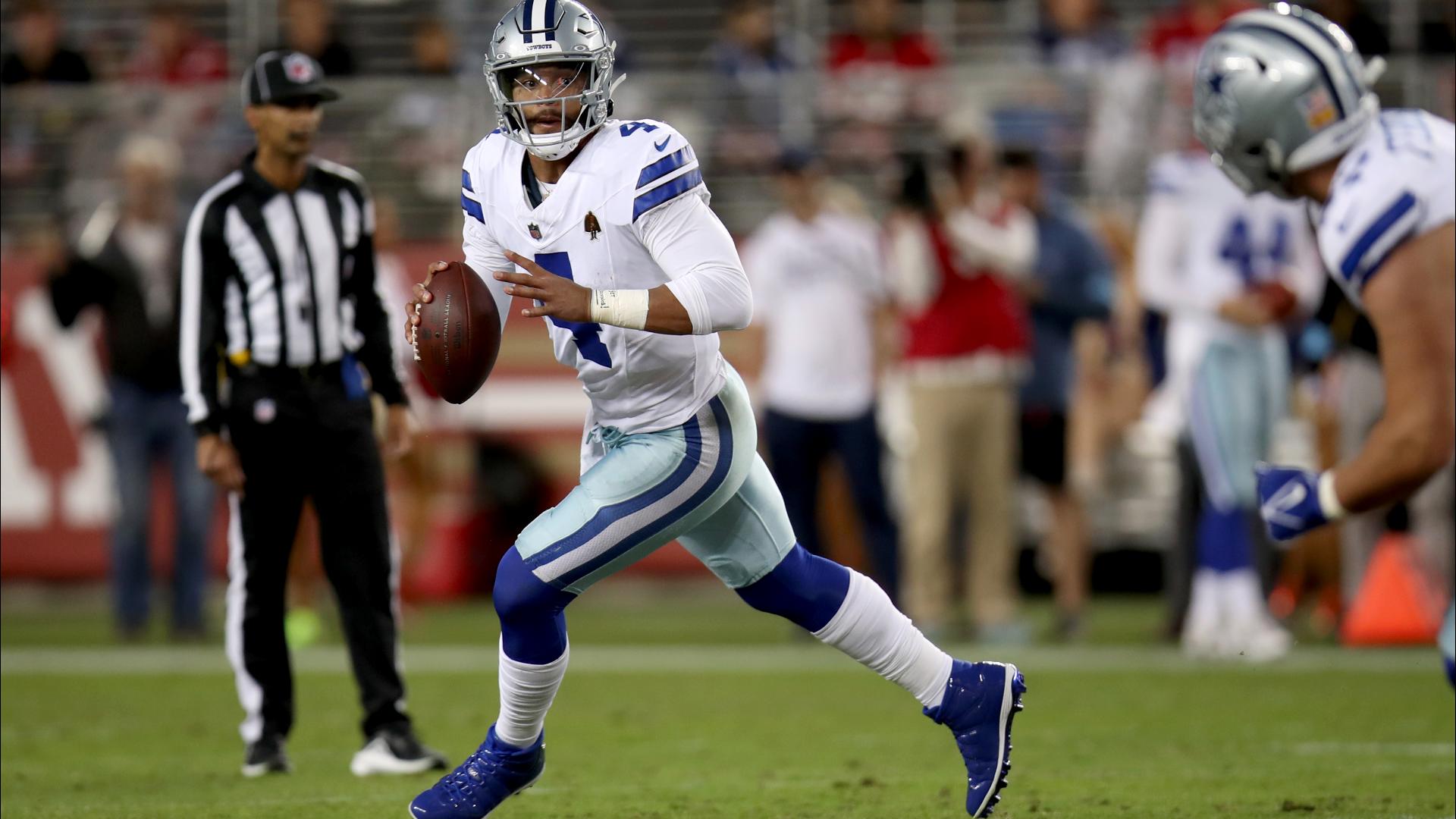DALLAS — The conclusion of "The Last Dance," ESPN's 10-part documentary on the 1997-98 Chicago Bulls, reminds the sports world once again how much Michael Jordan permeated culture in the 1990s.
Could the dominance of Jordan in the sports world have influenced Dallas Cowboys owner Jerry Jones to build a bigger stage for the NFL?
If you look at the TV ratings, the Cowboys' Super Bowl wins from the 1990s are still among the most-watched TV events of all-time. The most-watched TV event ever was the series finale for M*A*S*H, but right behind it, until Eli Manning chucked up a prayer to David Tyree in Super Bowl XLII, was Cowboys-Steelers in Super Bowl XXX.
However, Jordan was almost as unstoppable in the media as he was on the court. In the 1990s, the Cowboys made the cover of Sports Illustrated 20 times with the last appearance coming in the middle of a slump in October of 1997.
Jordan graced SI's cover 35 times with his last appearance of the '90s coming in 1999, a year after he had retired. That isn't even taking into account his Gatorade, Coca-Cola, McDonald's Rayovac, Haynes, Ball Park Franks, and Nike endorsements. Jordan was everywhere.
What kid in the 1990s wanted to be like Troy Aikman, Emmitt Smith, or Michael Irvin? Most wanted to be like Mike.
Name the Cowboy who appeared in a feature film alongside Bugs Bunny to save the Looney Tunes.
The Cowboys' Super Bowl wins also took place amid Jordan's peak. Dallas' first Lombardi Trophy in the Jones era occurred in Super Bowl XXVII in January 1993. Five months later, Jordan capped off his first three-peat with a win over the Phoenix Suns. Then, that October, his retirement shocked the sports world, midway through the NFL season.
In 1994, when the Cowboys beat the Buffalo Bills again in Super Bowl XXVIII in January, not even Jordan's foray into minor league baseball could steal anyone's thunder.
However, Jordan come out of retirement in March 1995, two months after the Cowboys lost to the San Francisco 49ers in the NFC Championship Game, and then Dallas and Jordan each overlapped world championships again in 1996 when Dallas beat Pittsburgh in Super Bowl XXX and the Bulls vanquished the Seattle SuperSonics in the NBA Finals that June.
Jerry had really been working to grow the NFL's pie ever since he got into the league. In 1989, he was part of the "Chicago 11," a cadre of NFL owners who wanted Paul Tagliabue to be the new commissioner, not the old guard's pick, Jim Finks, current general manager of the New Orleans Saints. Jones saw where Tagliabue could take the NFL.
In 1993, when the NFL was negotiating their new television contracts, Jones brought News Corp's Rupert Murdoch to the table, and that is how FOX ended up outbidding CBS for the rights to the NFC package and why some fans have to tolerate Joe Buck calling Cowboys games.
That move benefited the league. In 1995, Jones made a move to benefit the Cowboys that ultimately led to benefiting the entire NFL. Franchise marketing rights were tied up in NFL Properties which, incidentally, was run by New York Giants co-owner Wellington Mara.
General Motors was the official vehicle of the NFL, and Coke was the official soft drink of the NFL. However, Jones felt he found a loophole in that he also owned Texas Stadium. Therefore, Ford could be the official vehicle of Texas Stadium, and Dr. Pepper could be the official soft drink of Texas Stadium. Jones eventually sued the NFL and they settled, but the end result was more revenue flowed into the league.
In 1999, the NBA launched NBA.com TV, which ultimately was shortened to NBA TV. In 2003, Jones helped the NFL launch its own network, which began broadcasting Thursday night games during the back half of the year starting in 2006. By 2012, NFL Network was airing Thursday night games by Week 2 with sundry Saturday specials towards the end of the year.
Rather than agreeing with another network to air games, the NFL created its own channel and aired another marketable game of the week there.
The NFL's TV presence is considerable with four broadcast partners in CBS, FOX, NBC, and ESPN. This isn't even taking into account the explosion of the internet and social media, which has helped the NFL become a year-round sport. It is possible for a football fan to get engrossed in the game and not need other live sports to fill the void.
After the Super Bowl concludes the season, there’s still the scouting combine, free agency, NFL Draft, OTAs, and training camp to look forward to before the next season begins and coverage of those events have never been more prevalent.
The stage is massive now compared to the early days of the 1990s, and it got there thanks in part to Jones' work behind the scenes helping out his fellow franchise owners. Jordan unlocked the door on how an athlete could affect the zeitgeist from a marketing standpoint and Jones walked merrily through it.
Now, if the Cowboys ever have the on-field fortune to win in February, it could very well be America's most-watched TV event of all-time.
Do you feel like Michael Jordan’s cultural and financial impact on his sport provided a blueprint for the NFL and the Cowboys in the 1990s? Share your thoughts with Mark on Twitter @therealmarklane.
More from WFAA Sports:
- NFC East Examination: Garrett provides twist to Cowboys vs Giants rivalry
- All eyes will be on Fort Worth when PGA returns to The Colonial, for both star power and COVID-19 handling
- As TEA allows outdoor graduation ceremonies, districts turn to Arlington’s stadiums
- When it comes to cornerbacks, height matters for the Cowboys
- TCU signs heavily recruited, 5-star running back Zach Evans



